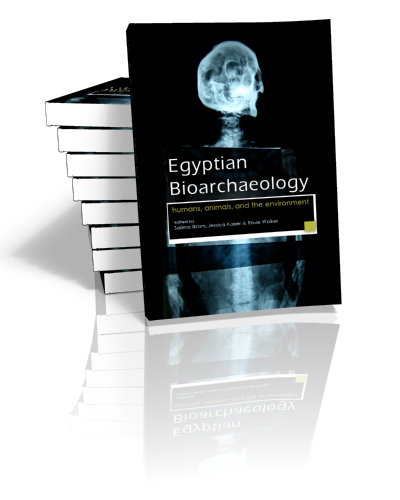Royal Inscriptions of the Neo-Assyrian Period: New Online Material
From Grant Frame [mailto:gframe@sas.upenn.edu]
From Grant Frame [mailto:gframe@sas.upenn.edu]
1. I am pleased to announce the presence of Part 2 of a fully searchable and lemmatized online corpus of the royal inscriptions of Sennacherib based on the volume "The Royal Inscriptions of Sennacherib, King of Assyria (704-681 BC), Part 2" (Royal Inscriptions of the Neo-Assyrian Period volume 3/2), texts edited by A. Kirk Grayson and Jamie Novotny.
This open access, electronic companion to RINAP volume 3/2 (Eisenbrauns, 2014) is accessible at http://oracc.museum.upenn.edu/rinap/corpus/ and http://oracc.museum.upenn.edu/rinap/rinap3/corpus/, as well as from the RINAP project's home page: (http://oracc.museum.upenn.edu/rinap/).
The book version of RINAP 3/2 can be purchased in North America from Eisenbrauns
(http://www.eisenbrauns.com/item/GRA2ROYAL) or in Europe from its partner Ugarit Verlag (https://www.ugarit-verlag.com).
The print and electronic versions of "The Royal Inscriptions of Sennacherib, King of Assyria (704-681 BC), Part 2" both provide up-to-date editions of 195 texts of Sennacherib, as well as 26 other late Neo-Assyrian inscriptions that might belong to this king and 2 inscriptions of his family (including one of his wives, Tashmetu-sharrat). The volume and its online companion contain historical inscriptions on bull and lion colossi from Nineveh, rock reliefs, stone horizontal prisms, and clay cylinders and prisms from other cities under Sennacherib's authority (especially Ashur and Tarbisu); epigraphs on reliefs; and inscriptions on bricks, threshold slabs, door sockets, wall panels, stone blocks, beads, metal plating (including door bands); and drafts and copies of historical and building inscriptions written on clay tablets.
* * * * *
2. Downloadable and searchable PDFs of name indices for RIMA 1-3 (Royal Inscriptions of Mesopotamia, Assyrian Period Volumes 1, 2, and 3), RIMB 2 (Royal Inscriptions of Mesopotamia, Babylonian Period Volume 2), and RIME 1-4 (Royal Inscriptions of Mesopotamia, Early Period Volumes 1, 2, 3/1, 3/2, and 4) are now available at the Royal Inscriptions of the Neo-Assyrian Period website:
<http://oracc.museum.upenn.edu/rinap/namesindex/>.
The indices include: Personal Names; Geographic, Ethnic, and Tribal Names; Divine, Planet, and Star Names; Gate, Palace, Temple, and Wall Names; and Object Names.
These indices have been prepared by Dr. Jamie Novotny, Dr. Josh Jeffers, and Dr. Andrew Knapp.
* * * * *
3. I am pleased to announce the presence of two new RINAP
subprojects: RINAP sources and RINAP scores. These are accessible at
http://oracc.museum.upenn.edu/rinap/sources/pager/
and
http://oracc.museum.upenn.edu/rinap/scores/pager/
The former includes individual object transliterations of approximately 1,200 inscribed objects from the reigns of Tiglath-pileser III, Shalmaneser V, Sennacherib, and Esarhaddon. The latter contains twenty-nine scores of Sennacherib and twenty-four scores of Esarhaddon.
* * * * *
The RINAP Project is under the direction of G. Frame (University of
Pennsylvania) and is supported by the National Endowment for the Humanities and the University of Pennsylvania. The books are published by Eisenbrauns and the fully searchable and lemmatized online corpus is a subproject of the Open Richly Annotated Cuneiform Corpus (Oracc).
Links:
RINAP homepage: http://oracc.museum.upenn.edu/rinap/
List of Publications: http://oracc.museum.upenn.edu/rinap/publications/
Browse Online Corpus (RINAP 1, RINAP 3, RINAP 4):
http://oracc.museum.upenn.edu/rinap/corpus/
Browse Online RINAP 1 Corpus:
http://oracc.museum.upenn.edu/rinap/rinap1/corpus
Browse Online RINAP 3 Corpus:
http://oracc.museum.upenn.edu/rinap/rinap3/corpus
Browse Online RINAP 4 Corpus:
http://oracc.museum.upenn.edu/rinap/rinap4/corpus
Browse Online RINAP Sources:
http://oracc.museum.upenn.edu/rinap/sources/pager/
Browse Online RINAP Scores:
http://oracc.museum.upenn.edu/rinap/scores/pager/
Names Index (RIMA 1-3, RIMB 2, RIME 1-4):
http://oracc.museum.upenn.edu/rinap/namesindex/
Oracc: http://oracc.museum.upenn.edu/index.html
Eisenbrauns: https://www.eisenbrauns.com/
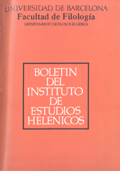
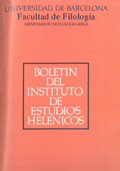
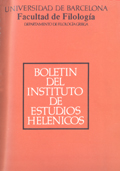
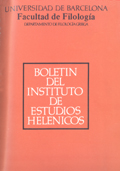
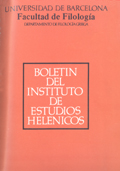
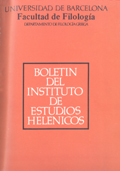
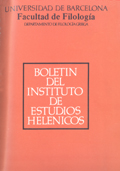
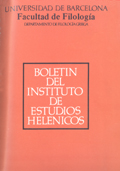
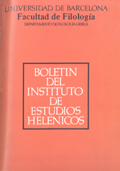
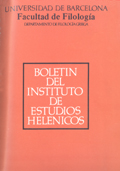
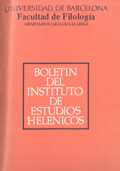
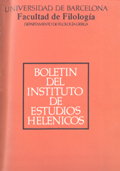
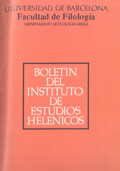
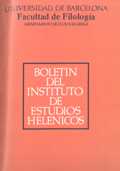
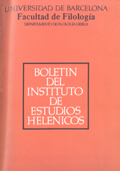














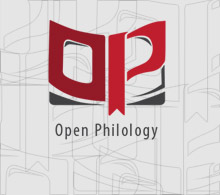
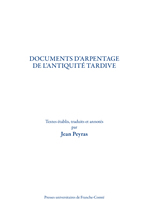 L'ouvrage reprend, traduit et commente des textes d'arpentage de l'Antiquité tardive ou destinés aux géomètres, édités par Karl Lachmann (Berlin, 1848). Les auteurs cités sont l'empereur Théodose Ier et le Préfet du Prétoire Néotorius, l'arpenteur Dolabella, la prophétesse étrusque Végoia. Le livre comprend aussi les extraits « De finium regundorum » intégrés au corpus gromatique.
L'ouvrage reprend, traduit et commente des textes d'arpentage de l'Antiquité tardive ou destinés aux géomètres, édités par Karl Lachmann (Berlin, 1848). Les auteurs cités sont l'empereur Théodose Ier et le Préfet du Prétoire Néotorius, l'arpenteur Dolabella, la prophétesse étrusque Végoia. Le livre comprend aussi les extraits « De finium regundorum » intégrés au corpus gromatique.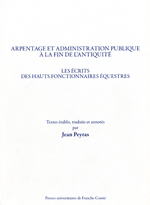 L'ouvrage comprend, réalisés principalement à partir de l'edition de K. Lachmann, une traduction et un commentaire de textes émanant du bureau des géomètres perfectissimes de l'administration civile romaine sous la dynastie valentino-théodosienne. Ces passages sont susceptibles d'intéresser les historiens qui se demanderont pour quelle raison on relève une telle activité vers 400 ; les archéologues et les juristes y puiseront des informations sur l'organisation du sol et sur le bornage, les philologues purront être intéressés par la distinction qui est proposée entre notes de terrain et rapports élaborés, ainsi que par le vocabulaire technique.
L'ouvrage comprend, réalisés principalement à partir de l'edition de K. Lachmann, une traduction et un commentaire de textes émanant du bureau des géomètres perfectissimes de l'administration civile romaine sous la dynastie valentino-théodosienne. Ces passages sont susceptibles d'intéresser les historiens qui se demanderont pour quelle raison on relève une telle activité vers 400 ; les archéologues et les juristes y puiseront des informations sur l'organisation du sol et sur le bornage, les philologues purront être intéressés par la distinction qui est proposée entre notes de terrain et rapports élaborés, ainsi que par le vocabulaire technique.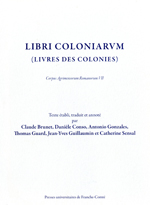 Les deux Libri coloniarum (« Libri des colonies ») rassemblent des notices administratives mises en forme au IVe siècle et concernant les cités des régions de l'Italie. Ils nous reseignent sur le statut des ces villes et sur l'organisation de leur territoire. Le présent volume offre la premieère traduction francaise complète des ces notices en regarde du texte latin de Lachmann que les auteurs ont amélioré et éclairé par des notes. Une introduction présente le problématique des Libri, et des annexes historiques, philologiques et linguistiques sont suivies d'indices latin exhaustifs.
Les deux Libri coloniarum (« Libri des colonies ») rassemblent des notices administratives mises en forme au IVe siècle et concernant les cités des régions de l'Italie. Ils nous reseignent sur le statut des ces villes et sur l'organisation de leur territoire. Le présent volume offre la premieère traduction francaise complète des ces notices en regarde du texte latin de Lachmann que les auteurs ont amélioré et éclairé par des notes. Une introduction présente le problématique des Libri, et des annexes historiques, philologiques et linguistiques sont suivies d'indices latin exhaustifs.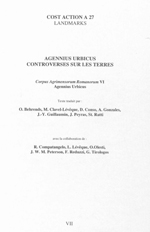 Cet ouvrage publié par l'Action COST A 27 est le fruit d'une collaboration scientifique étroite entre plusieurs équipes de six pays au sein du WG 2 « Rural Landscapes ». L'étude des marqueurs des paysages culturels hérités constitue l'objectif prioritaire de notre Action qui est illustré très tôt, dès l'Antiquité, par les débats et controverses qui agitent, dans la longue durée, le monde rural.
Cet ouvrage publié par l'Action COST A 27 est le fruit d'une collaboration scientifique étroite entre plusieurs équipes de six pays au sein du WG 2 « Rural Landscapes ». L'étude des marqueurs des paysages culturels hérités constitue l'objectif prioritaire de notre Action qui est illustré très tôt, dès l'Antiquité, par les débats et controverses qui agitent, dans la longue durée, le monde rural.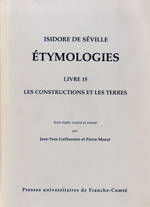 Le livre 15 de la grande encyclopédie d'Isidore de Séville (premier tiers du VIIe siècle) modélise une Cité des hommes fortement structurée aussi bien dans sa composante urbaine que dans l'organisation de son territoire. Les structures spatiales de l'urbs offrent le cadre dans lequel se maintient une ciuitas dont la permanence, posée comme une réalité par Isidore, assume et transcende la diversité des sources antiques que l'évêque de Séville juxtapose en une puissante synthèse. C'est dire que ce texte, qui n'avait encore jamais été traduit, est un élément de référence obligé pour les historiens et pour les anthropologues autant que pour les philologues.
Le livre 15 de la grande encyclopédie d'Isidore de Séville (premier tiers du VIIe siècle) modélise une Cité des hommes fortement structurée aussi bien dans sa composante urbaine que dans l'organisation de son territoire. Les structures spatiales de l'urbs offrent le cadre dans lequel se maintient une ciuitas dont la permanence, posée comme une réalité par Isidore, assume et transcende la diversité des sources antiques que l'évêque de Séville juxtapose en une puissante synthèse. C'est dire que ce texte, qui n'avait encore jamais été traduit, est un élément de référence obligé pour les historiens et pour les anthropologues autant que pour les philologues.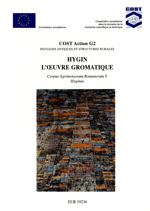 Longtemps présentés comme un des acteurs gromatiques les plus anciens, il est désormais acquis qu'Hygin s'inscrit dans une fourchette chronologique précise qui le rattache au mouvement de reprise en main des terres par l'autorité de l'État, de Vespasien à trajan. Dans ce cadre, les sciences et les techniques gromatiques connaissent un regain de vitalité, regain auquel ont concouru les auteurs-patriciens cités ci-dessus. Hygin occupe peut-être une place originale dans ce renouveau, dans la mesure où il apparaît plus comme un abréviateur de thèmes et de problèmes évoqués plus largement par les autres auteurs gromatiques. Il ne faudrait pas cependant minimiser son intérêt puisqu'il nous permet souvent de mieux appréhender un certain nombre de problèmes, notamment grâce à l'utilisation d'un vocabulaire souvent original qui vient, de fait, élargir le lexique technique et nous offrir un tableau affiné de l'art des arpenteurs.
Longtemps présentés comme un des acteurs gromatiques les plus anciens, il est désormais acquis qu'Hygin s'inscrit dans une fourchette chronologique précise qui le rattache au mouvement de reprise en main des terres par l'autorité de l'État, de Vespasien à trajan. Dans ce cadre, les sciences et les techniques gromatiques connaissent un regain de vitalité, regain auquel ont concouru les auteurs-patriciens cités ci-dessus. Hygin occupe peut-être une place originale dans ce renouveau, dans la mesure où il apparaît plus comme un abréviateur de thèmes et de problèmes évoqués plus largement par les autres auteurs gromatiques. Il ne faudrait pas cependant minimiser son intérêt puisqu'il nous permet souvent de mieux appréhender un certain nombre de problèmes, notamment grâce à l'utilisation d'un vocabulaire souvent original qui vient, de fait, élargir le lexique technique et nous offrir un tableau affiné de l'art des arpenteurs.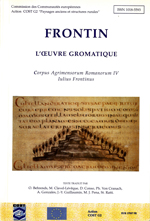 Nous sommes en présence, comme chez Hygin l'Arpenteur, d'une tentative de formalisation du savoir technique des arpenteurs, mais également, et peut-être pour la première fois d'une manière aussi marquée, d'une formalisation juridique. Cette dernière s'exprime notamment à travers la classification qu'opère Frontin à propos des controverses sur les sols, les propriétés, les limites, etc. Cette typologie constitue le coeur d'un ouvrage, dont l'ultime partie, consacrée à l'"art de la mesure", a posé tant de questions aux chercheurs. Frontin, dans la production littéraire duquel l'oeuvre gromatique n'est qu'un aspect, modélise et tente de rationaliser une connaissance, pratique et savante, à destination d'un public d'arpenteurs que le dernier tiers du Ier siècle de notre ère met à contribution dans la réorganisation des terres publiques.
Nous sommes en présence, comme chez Hygin l'Arpenteur, d'une tentative de formalisation du savoir technique des arpenteurs, mais également, et peut-être pour la première fois d'une manière aussi marquée, d'une formalisation juridique. Cette dernière s'exprime notamment à travers la classification qu'opère Frontin à propos des controverses sur les sols, les propriétés, les limites, etc. Cette typologie constitue le coeur d'un ouvrage, dont l'ultime partie, consacrée à l'"art de la mesure", a posé tant de questions aux chercheurs. Frontin, dans la production littéraire duquel l'oeuvre gromatique n'est qu'un aspect, modélise et tente de rationaliser une connaissance, pratique et savante, à destination d'un public d'arpenteurs que le dernier tiers du Ier siècle de notre ère met à contribution dans la réorganisation des terres publiques. Ce volume présente la première traduction d'un traité d'arpentage écrit au Ier siècle de notre ère, conservé et illustré par des manuscrits antiques et médiéveaux à partir du Ve siècle. L'ouvrage est consacré à la conception et à la construction des limites orthogonales qui dessinent et structurent les paysages volontaires antiques, dont l'orientation et le quadrillage symbolisent l'ordre cosmique et l'harmonie du monde. Mais si les principes de base ont déterminé un modèle d'organisation et d'aménagement hiérarchisé du territoire, il s'est adapté aux contraintes du milieu et aux nécessités de l'histoire. D'où l'existence de cas de figures multiples qu'illustrent les nombreuses vignettes. Le modèle, essentiellement consacré aux territoires des colonies, intègre en souplesse les divers niveaux, publics et privés, d'organisation spatiale, de production et de vie sociale. L'auteur présente ici le territoire de chaque cité, avec la place de son cadastre centurié, comme une image du monde.
Ce volume présente la première traduction d'un traité d'arpentage écrit au Ier siècle de notre ère, conservé et illustré par des manuscrits antiques et médiéveaux à partir du Ve siècle. L'ouvrage est consacré à la conception et à la construction des limites orthogonales qui dessinent et structurent les paysages volontaires antiques, dont l'orientation et le quadrillage symbolisent l'ordre cosmique et l'harmonie du monde. Mais si les principes de base ont déterminé un modèle d'organisation et d'aménagement hiérarchisé du territoire, il s'est adapté aux contraintes du milieu et aux nécessités de l'histoire. D'où l'existence de cas de figures multiples qu'illustrent les nombreuses vignettes. Le modèle, essentiellement consacré aux territoires des colonies, intègre en souplesse les divers niveaux, publics et privés, d'organisation spatiale, de production et de vie sociale. L'auteur présente ici le territoire de chaque cité, avec la place de son cadastre centurié, comme une image du monde. Ce livre rassemble les volume II et III du Corpus Agrimensorum Romanorum. Il contient l'édition et la traduction du texte de Balbus : Présentation systméatique de toutes les figures, ainsi que le traité sur La mesure par pieds, et les textes connexes extraits d'Epaphrodite et de Vitrivius Rufus : La mesure des Jugères.
Ce livre rassemble les volume II et III du Corpus Agrimensorum Romanorum. Il contient l'édition et la traduction du texte de Balbus : Présentation systméatique de toutes les figures, ainsi que le traité sur La mesure par pieds, et les textes connexes extraits d'Epaphrodite et de Vitrivius Rufus : La mesure des Jugères.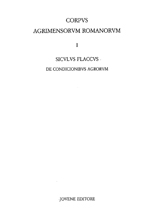 Le travail présenté ici est le premier volume d'une série de traductions consacrée aux textes des auteurs gromatiques entreprise par un collectif de chercheurs européens. Il a été réalisé grâce à une large coopération internationale par le Réseau européen de laboratoires "Paysages antiques et structures rurales : textes et archéologie" qui réunit les laboratoires d'histoire, d'archéologie et de droit romain des Universités et Centres de recherche d'Athènes (Fondation Hellénique de la Recherche), Barcelone (Université autonome), Besançon (GDR 926 CNRS), Evora, Grenade, Naples - Federico II et Rome - La Sapienza.
Le travail présenté ici est le premier volume d'une série de traductions consacrée aux textes des auteurs gromatiques entreprise par un collectif de chercheurs européens. Il a été réalisé grâce à une large coopération internationale par le Réseau européen de laboratoires "Paysages antiques et structures rurales : textes et archéologie" qui réunit les laboratoires d'histoire, d'archéologie et de droit romain des Universités et Centres de recherche d'Athènes (Fondation Hellénique de la Recherche), Barcelone (Université autonome), Besançon (GDR 926 CNRS), Evora, Grenade, Naples - Federico II et Rome - La Sapienza.



